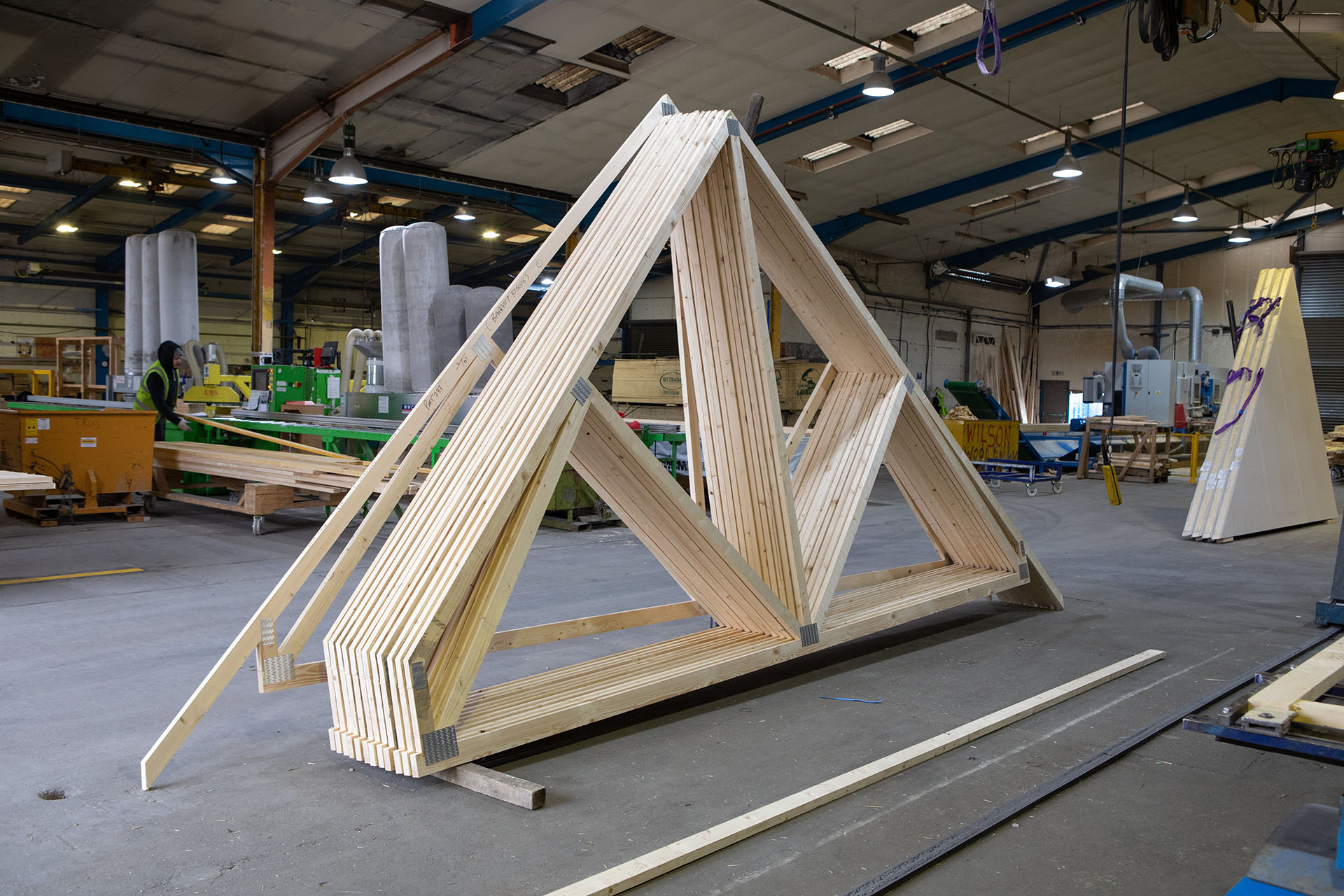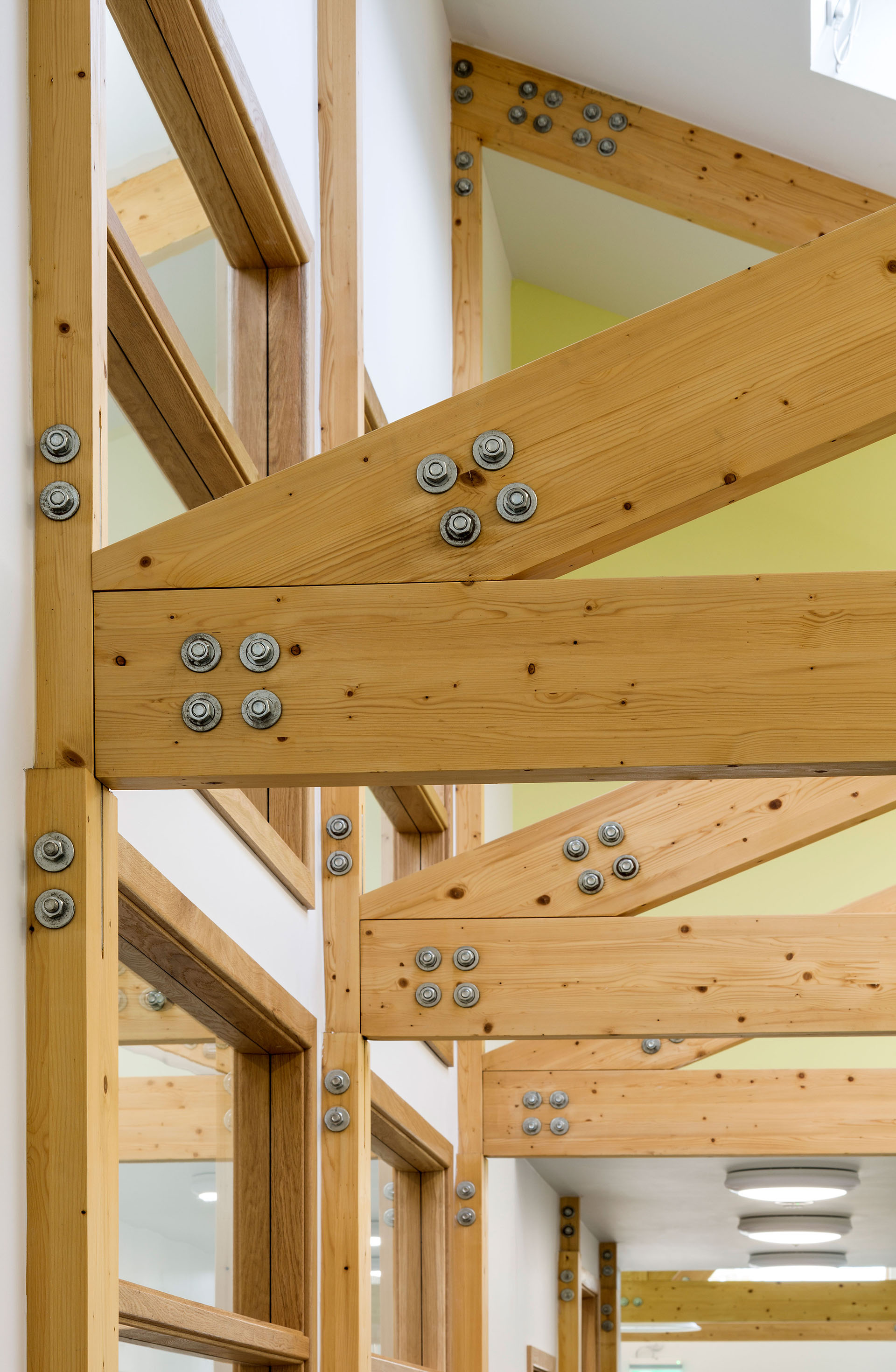A roof truss consists of top chords, bottom chords, internal web members and steel connector plates at all junctions to connect the timbers together and the combination of timber and plates support the roof loadings throughout the truss and down into the load bearing supports below.
Timber roof trusses can be used to frame a wide range of roofs, both cold and warm, and a wide range of super structures including timber, masonry and steel frame. There’s a variety of different roof trusses and they vary in terms of their shape, size and use and it can be overwhelming trying to work out which type you need for your project. As a roof truss manufacturer, we want to help make it clear what the most popular different types of roof trusses are and what they are typically used for.
We design all types of roof trusses, some examples are fink trusses, attic trusses, scissor trusses, raised tie trusses and mono trusses to Glulam feature trusses, oak feature trusses and kerto feature trusses. We have outlined some of the different types of roof trusses in our graphic below:

Standard Fink Trusses: these are most common type of truss used for the majority of new build houses across the UK and mostly by national housebuilders. These can be used as roof trusses for garages, extensions and self builds too.

Attic Trusses (standard overhang, cantilevered eaves and stubbed eaves): Attic trusses are used when a habitable space is required within a roof zone. The trusses are designed as attic style with larger timber sections to support additional loadings to allow people to live within the truss zone.

Scissor Trusses: these are used primarily as a feature over living rooms or master bedrooms. The bottom chord members are pitched to create a sloping ceiling. The appearance is similar to scissors, hence their name.
Mono Trusses: these are sloped in one direction and often used in porches and to form roofs with hip ends but can also be used to form new build roofs.
Feature trusses (Glulam, oak and kerto): used when trusses are to be visible as a decorative feature. These trusses can have steel connector plates, bolted connections at each joint or can be formed using mortise and tenon joints and can also be designed to be both structural and decorative.


Raised Tie Trusses: These are used to create a part sloping ceiling within a room. These sloping ceilings are ideal for adding Velux windows.
Although these are the most popular types of roof trusses we design and supply, we can manufacture to a different shape based on customers’ requirements. For example in a recent project with Scripture Union, we designed and manufactured barrel trusses for their uniquely shaped camping pods.

Cold roof trusses vs warm roof trusses:
Cold roof trusses are most commonly used in new build houses. These are our standard fink trusses and the loft insulation is laid directly above the ceiling. They are called ‘cold’ trusses because the area above the loft insulation leaves a large cold space in the roof zone.
A warm roof truss, also referred to as an attic truss is where people live so the insulation on the truss is placed within the sloping top chord of the truss so there is a minimal void space above the insulation and the outside environment, hence the term ‘warm’ roof truss.
Rafters vs Trusses:
There’s often some confusion between trussed rafters and roof trusses and we want to try and provide some clarity about the differences. Rafters need to be cut and constructed on site whereas a truss is a fully designed structure meant to be lifted and installed onto the roof. Rafters require more labour costs and time, whereas trusses are manufactured offsite ready to be installed when they reach the site.
We often get asked what the standard size and pitch of a truss is as many people think they are an off the shelf product. They are not. Each roof truss we supply is designed for the building they are being used for, so they are completely unique.
As well as roof trusses, we design and manufacture a range of high quality timber engineering products including joists and panels. You can request instant, competitive pricing for the roof trusses and joists you need using our instant quote function. If you require help with a more complex roof truss solution, please get in touch and our design team will be happy to assist you with your enquiry.